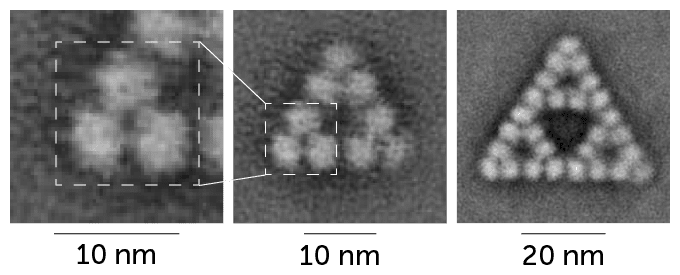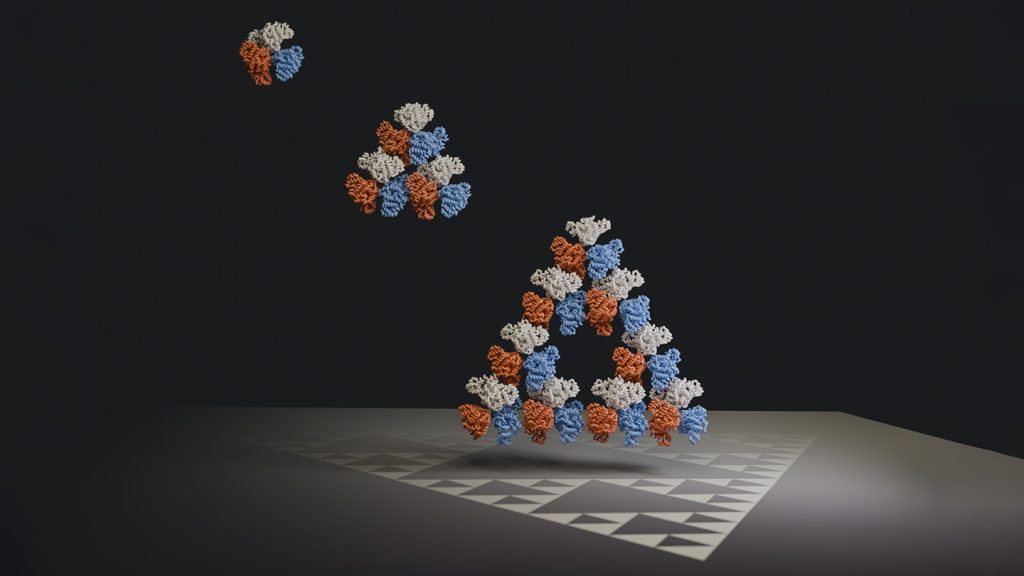Fractals are found throughout nature, such as in river deltas and tree branches. These patterns look the same from far away and close up. Some fractals, known as regular fractals, are identical at different scales and include the spirals of Romanesco cauliflower. Romanesco cauliflower (SN: 7/8/21). But regular fractals hadn’t been spotted in nature on the molecular level — until now.
A protein in the bacterium Synechococcus elongatus organizes itself into a fractal structure known as a Sierpiński triangle, according to a report by evolutionary biochemist Georg Hochberg and colleagues published on April 10 in Nature. When placed in water, the proteins connected to form triangles composed of smaller triangles, with as many as 54 individual proteins, and possibly more.
Previously, scientists had created artificial molecules that can form regular fractal shapes. However, the bacterial protein, called citrate synthase, is the first of its kind with this fractal pattern to be found in nature.

The scientists could not find a practical purpose for the pattern and concluded that it is an evolutionary coincidence. Accidents also happen in other protein assemblies. Georg Hochberg, from the Max Planck Institute for Terrestrial Microbiology in Marburg, Germany, stated, “Different types of complex structures emerge and disappear over evolutionary timescales, sometimes with a function, sometimes without. Their symmetry can be captivating to us, and that's why we believe they have meaning.”



